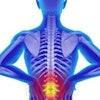Emergency medicine residents need to go beyond 10 FAST (focused abdominal sonography for trauma) examinations in order to be adequately trained, according to research published in the latest issue of the Journal of Ultrasound in Medicine.
"The suggestion that 10 examinations could be used as a minimum standard for training in FAST examinations was not validated (by the research)," the authors wrote. "Thirty-five percent of residents performing their 11th through 20th FAST examinations had sensitivities below 60%."
To evaluate recent theories that 10 FAST examinations could be a minimum standard for training, researchers from the Washington University School of Medicine in St. Louis performed a retrospective review of abdominal trauma patients who received FAST examinations from residents prior to surgical or department of radiology evaluation (JUM, June 2004, Vol. 23:6, pp. 793-797).
During the study period (April 2000-March 2002), 689 patients received resident-performed FAST followed by reference-standard evaluations. Of the 689 patients, 412 underwent studies by residents who had previously performed 10 FAST examinations, while 154 patients had exams from 29 residents performing their 11th through 30th studies. Ten residents handling their 31st and subsequent examinations tackled 258 cases.
Before the study period, no resident had performed any sonographic studies other than the FAST examination, and no resident had performed more than three of the FAST studies. The FAST results were compared with subsequent surgical findings or formal radiology department standards with the use of predesigned data sheets.
The researchers used surgical or pathologic results, when available, as reference standards; otherwise, abdominal CT findings were considered the reference standard (for pregnant patients, abdominal ultrasound and inpatient observation were utilized).
For the sake of analysis, the study team considered indeterminate findings to be false-positive for patients with normal reference standards, and false-negative for patients with abnormal reference standards.
Residents with 11 to 20 examinations of FAST experience turned in a sensitivity of 73.9% and specificity of 98.8%. There were 17 true-positives, 81 true-negatives, one false-positive, and six false-negative findings among the 105 patients.
For those who had performed 21 to 30 examinations, residents produced a sensitivity of 100%, and a specificity of 97.1%. There were 14 true-positive, 34 true-negative, one false-positive, and no false-negative findings in the 49 patients.
Residents with more than 31 examinations of experience posted a sensitivity of 94.8% and a specificity of 98.6%. This group had 110 true-positives, 140 true-negatives, two false-positives, and six false-negative findings among 258 patients.
"(The study) suggests that more extensive training may be necessary before EM residents can independently and accurately perform FAST examinations," the authors wrote. "Society for Academic Emergency Medicine and Residency Review Committee guidelines should be modified to account for this."
By Erik L. RidleyAuntMinnie.com staff writer
June 2, 2004
Related Reading
Emergency ultrasound training improves, but few ER docs meet AIUM guidelines, March 29, 2004
Affordable equipment accelerates ultrasound proliferation, January 26, 2004
Medicare database shows cardiologists driving up imaging costs, January 9, 2004
Non-radiologists outpace radiologists in skyrocketing use of ultrasound, December 1, 2003
Radiologists and surgeons fractured over vertebroplasty vs. kyphoplasty, November 18, 2003
Copyright © 2004 AuntMinnie.com




















